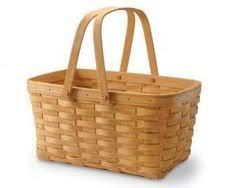The next day I went to the library and checked out a history amusingly entitled “Livestock Hotels.” I was kind of surprised (and a little repulsed) by how fascinated I had suddenly become with stockyards. Briefly: stockyards (and the accompanying meat-packing plants) developed in tandem with railroads, in many cases dictating the paths of future lines by the business they promised (and delivered, for quite some time) to bring in terms of livestock shipping. This history is pretty interesting and claims responsibility for the growth of a lot of cities in the middle west, such as Kansas City and Fort Worth—cities that have been able to focus on industrial development precisely because of their proximity to railroads.
Lancaster’s stockyards, however (in some sort of rag-tag earthen road kind of way), predated the railroads by nearly 100 years. They connected the countryside to the city, providing a steady flow of creatures for consumption back to Philadelphia. Other services built up around the stockyards and the roads became more established. In fact, the first turnpike in the country was from Philadelphia to Lancaster (started I think in the 1790s). The book puts it something like this: every soul leaving or on its way to the city first made a stop in Lancaster.
 It’s always strange for me to think about Lancaster’s role in American history. It falls into the vast category of city that was established because of the resources it offered: rich soils and river access along the Conestoga and Susquehanna. We are still cashing in on those rich soils today—and in fact, Lancaster County ranks #1 in terms of the percentage of its land that is permanently preserved. However, what keeps Lancaster going has become more complex. It’s not the yields from farmland and barnyards that keep people coming here—it’s the opportunity to see the working farms, i.e. this form of pastoral tourism. Like, whoa, people really grow food.
It’s always strange for me to think about Lancaster’s role in American history. It falls into the vast category of city that was established because of the resources it offered: rich soils and river access along the Conestoga and Susquehanna. We are still cashing in on those rich soils today—and in fact, Lancaster County ranks #1 in terms of the percentage of its land that is permanently preserved. However, what keeps Lancaster going has become more complex. It’s not the yields from farmland and barnyards that keep people coming here—it’s the opportunity to see the working farms, i.e. this form of pastoral tourism. Like, whoa, people really grow food.
Anyway, that’s a tangent I’ll touch on later. What I wanted to get at was the statement that Lancaster was an essential stop for the city-goer. Reading something like that now struck me as ridiculous: do people heading west really need to stop here on their way? What would they get? Shoo-fly pie and root beer to last through the winter? Bonnets and muck boots for when it gets rainy? Weird agro-tourism (corn maze!) and rural-lifestyle tourism (buggy rides!) have grown up around the real agriculture industry and real rural lifestyles, so it’s hard for me to imagine anyone getting something essential out of that experience.
Fact: all of my friends live in or beside cities at least ten times the size of Lancaster, and more than a few times I have housed some of them for weekends or amidst road trips or as a final stop before moving back to the magnetic New York. And it occurred to me that maybe Lancaster could have something essential to the city-goer, given that perhaps 90% of my close friends from college have come to visit. In fact, last weekend featured five wonderful friends from Philadelphia and New York.
I would venture too that everyone (including these friends and those before them) has had a decent time—not just because we are friends (old friends even) together, but because Lancaster is kind of a wacky experience, lacking in both small town and big city characteristics and instead exceeding in...something. It was proven this weekend that an entire trip can be based on freshly made snack foods and swimming in the famous Conestoga, for example. I don’t know. Would anyone care to claim that this is not essential?



